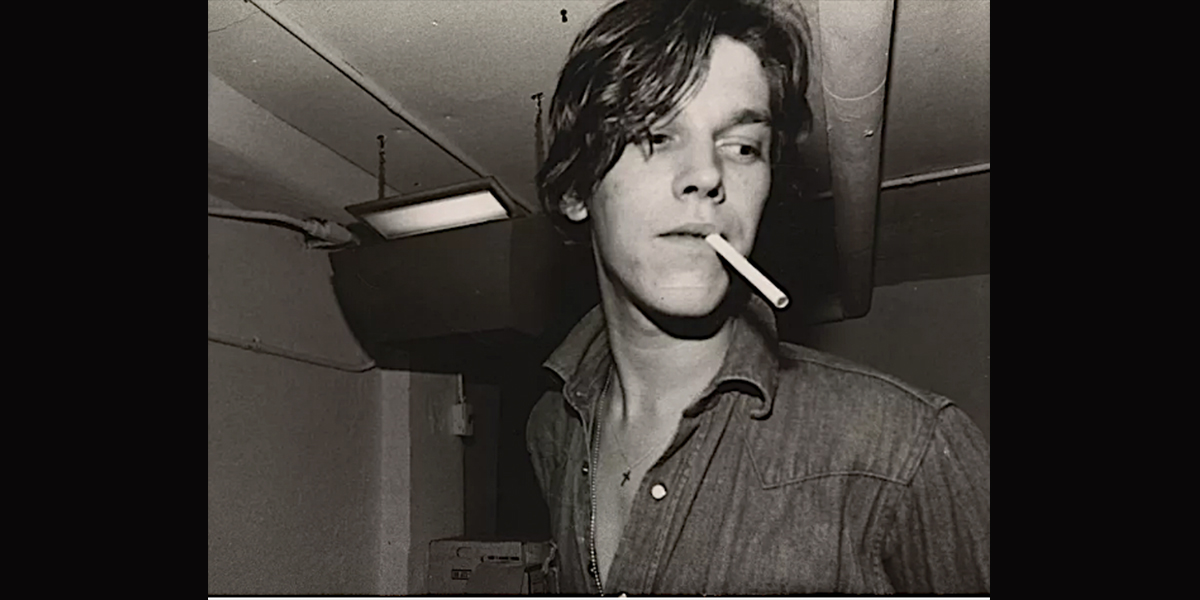Fifteen summers after Nan Goldin first brought David Armstrong’s world to the Parc des Ateliers, his photographs return to Arles – not as relics, but as living proof that specific ways of seeing never fade. The LUMA Foundation’s expansive survey (through Spring 2026) reveals how Armstrong’s camera didn’t just capture faces; it bottled a particular oxygen that once filled downtown lofts and after-hours clubs – an atmosphere equal parts glamour and grit.
Armstrong’s New York wasn’t the skyline postcard version. His lens sought out the cracks where light leaked through – the spaces between rent checks, the hours before dawn, the moments when makeup smudged and pretences dropped away. The black-and-white portraits from his Boston School days (a loose collective that includes Goldin, DiCorcia, and Morrisroe) document more than a scene; they preserve a way of life. Young men drape themselves across battered sofas with the studied nonchalance of Renaissance saints. Women stare down the lens like they’re deciding whether to let you stay the night.
What makes these images vibrate decades later is their radical honesty. Before the age of Instagram personas, Armstrong’s subjects presented themselves raw – seductive but never performing, vulnerable but never weak. The exhibition highlights his unique alchemy: an ability to transform Polaroids and 35mm shots into something approaching medieval portrait miniatures—small, intense, and freighted with unspoken narratives.

The show’s revelation comes in Armstrong’s landscapes from the late 1980s – those hazy, horizon-less vistas taken as AIDS ravaged his community. Where his portraits crackle with immediacy, these blurred panoramas feel like memories half-recalled. A highway dissolves into fog. Park benches sit empty under sodium lights. Seen through the prism of loss, they become secular memento mori – not grand statements about mortality, but quiet notes slipped into the pocket of history.
LUMA’s presentation (developed with Kunsthalle Zürich) avoids hagiography. Curators Wade Guyton and Matthieu Humery let the work speak in its native language – unframed prints pinned like butterflies, contact sheets revealing the artist’s editing process, vintage magazine spreads showing how these images first entered public consciousness. The installation recreates Armstrong’s democratic eye: a drag queen shares wall space with a fire escape; a lover’s face appears no more or less important than the pattern of shadows on a tenement wall.
Armstrong died in 2014, but this exhibition proves his vision endures. In an era of curated identities and algorithmic aesthetics, his photographs remind us that real subversion isn’t shock tactics – it’s refusing to look away. The show doesn’t mourn some lost golden age; instead, it suggests that the attitude Armstrong captured – that mix of defiance and tenderness – still exists wherever people carve out spaces to be genuinely, messily themselves.
Top Photo: David Armstrong, David, Boston, Mid 1970s Gelatin Silver Print Courtesy LUMA
David Armstrong continues at LUMA Arles through Spring 2026. The exhibition catalogue includes previously unpublished correspondence between Armstrong and Nan Goldin.

